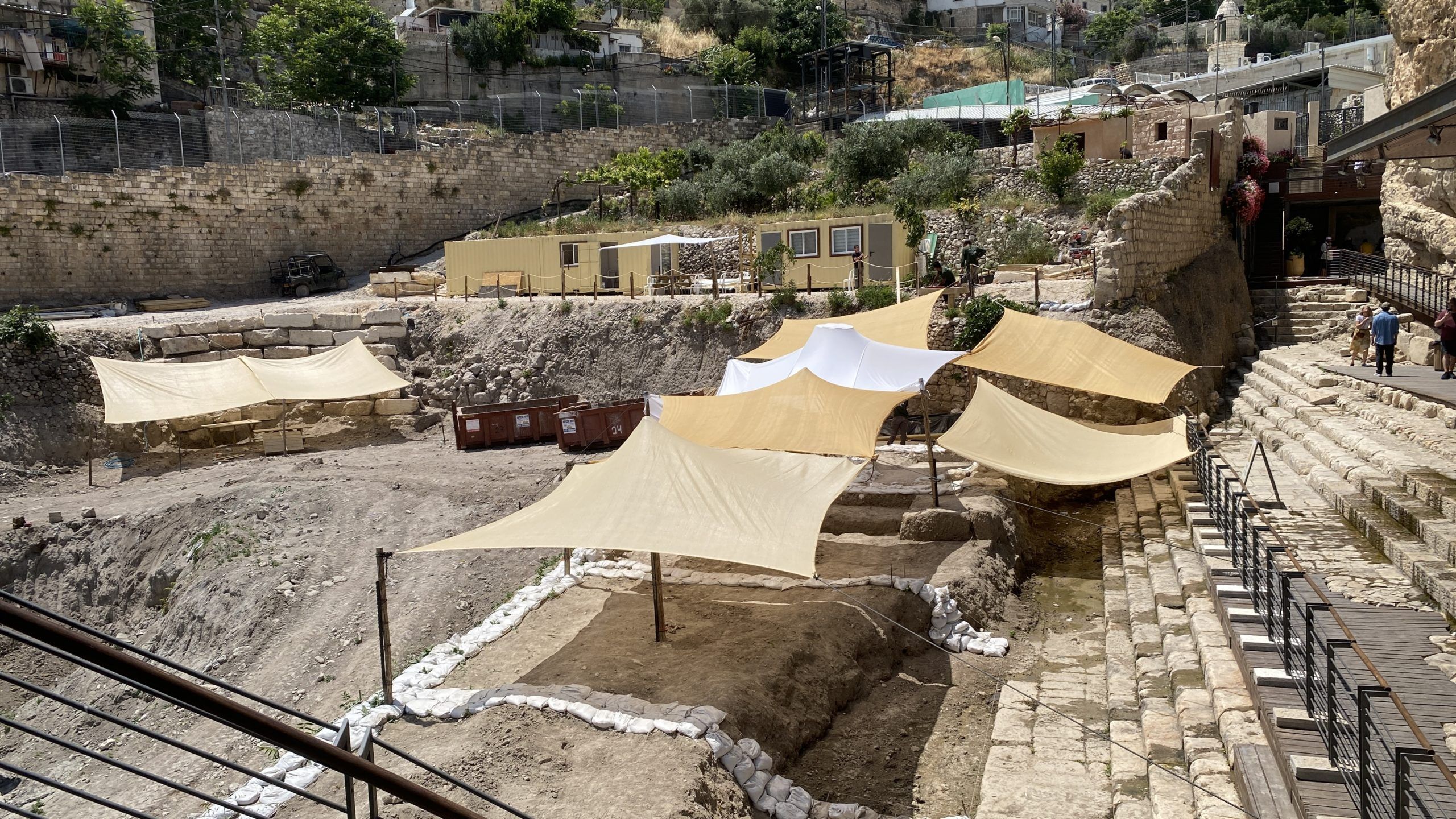The Deafening Winds of Popular Opinion

The State of American Christian Thinking and Education
I was recently doing some research on the biblical city of Sodom. I was reading differing theories about the location of the city and comparing the work done by various scholars and explorers. I found that there was some good scholarly work that was based on research and fieldwork with sound methodology. The sites were excavated properly, the data collected, and the results were published in peer-reviewed academic journals for anyone to read, argue, and discuss. I also found that there were sensational claims made by untrained explorers. They dug around the dirt looking for “sulfur balls,” made YouTube videos, and presented their evidence on their own websites.
These people all claimed to be believers in Christ and to be working for the glory of God. The difference is that one group followed established scientific methods, recorded their findings methodically, and presented their results to be scrutinized by other experts in both archaeology and biblical studies. The other group saw a landscape that was colored differently from the surroundings and contained erosion patterns in the Lisan Marl, a soft silty clay, that gave vaguely building-like shapes and claimed that these were the buildings of Sodom, turned to ash. The group produced videos that made questionable claims based on speculation. Instead of using cohesive arguments, they answered their critics with accusations of faithlessness and unbelief.
Whether either of these claims is the actual site of the city of Sodom is not the point of this article. Rather, I would like to explore the use of archaeology as a biblical apologetic and the spirit in which our arguments should be presented. As believers, when we present a case to others, whether fellow believers or skeptics, how we treat them is important. In fact, sometimes how we speak to others can be more important toward achieving our goals of sharing the gospel than the substance of the argument itself. Being thorough in our studies is explicitly taught in Scripture (2 Tim. 2:15) and we should never present false information or shoddily researched evidence.
Apologetics
Apologetics is defined as: “systematic argumentative discourse in defense (as of a doctrine); a branch of theology devoted to the defense of the divine origin and authority of Christianity” (Merriam-Webster). The word is derived from the Greek ἀπολογία (ap-ol-og-EE-ah), which carries the connotation of a legal brief. Peter writes to believers to “…be ready always to give an answer (ἀπολογία) to every man that asketh you a reason of the hope that is in you with meekness and fear” (1 Peter 3:15). While most Christians today understand what apologetics means, we often miss the last part of Peter’s admonition, to present our arguments with humble respect, or as Voddie Baucham says, “in a winsome manner.”
What Is Archaeology?
Archaeology, according to evangelical archaeologist Randall Price, in his book, The Stones Cry Out, is “A branch of historical research that seeks to reveal the past by a systematic recovery of its surviving remains.” Archaeology involves copious amounts of research and tedious study before breaking ground at a dig site. Once the research is complete, the archaeologist goes through the process of obtaining the proper licenses and permits. The archaeologist then puts together a team of experts and raises the necessary funds for the work. The site is prepared with surveys and meticulously recorded information and the proper facilities are put in place. Once the staff and volunteers arrive on the site, the physical work can begin. The excavation squares are laid out and measurements and elevations are recorded. After the surface is cleared, the digging commences. We often call this part “draining the bathtub” because we do not dig holes; rather, we scrape the layers of dirt, revealing the earlier layers millimeter by millimeter. This is important because it is easy to miss an earlier occupation due to the subtle shift in soil coloration as new deposits were laid down. Every change in material is photographed, color-matched, sampled, and recorded. Potsherds and other artifacts are measured, collected, tagged, and recorded. They are later sorted and examined by multiple experts to identify and date them properly. When this is done correctly, an archaeologist can tell you the coordinates where an ancient coin was found in the square down to the centimeter and the elevation according to sea level. When the soil is removed from the square, it is sifted through screens, revealing additional artifacts. The remaining matrix is then either discarded into what is called a “dump pile” that is recorded and can be examined by future archaeologists, or is taken to a second sifting station, this time sifted through running water, revealing even more small finds before being placed in the dump pile.
Once the dig season is over, the archaeologists study the artifacts, often sending them to various laboratories to be tested for residue, carbon, DNA, or even hidden markings such as teeth marks or faded writing. During the off-season, the archaeologist usually teaches at a university and spends a great deal of time writing reports from the information gathered, as well as researching the material culture from the excavation. Once the appropriate data is collected, the archaeologist will write about certain artifacts of interest and submit them to a professional journal for the peer review process. This peer review is a period when other, anonymous experts examine the conclusions of the archaeologist. The reviewers will then submit suggestions and critical assessments. If the archaeologist has done his due diligence, his article will be published in a professional journal, whether the reviewers agree with his conclusions or not. The publication is then available to both experts and the general public. Arguments will be made, and conclusions will be questioned. If the archaeology was conducted properly, the results will become a part of the body of scholarship on the subject.
What Archaeology Is Not
The popular view of archaeology, as presented by Hollywood, is the grizzled adventurer who goes in search of a priceless artifact, fighting villains and destroying millennia-old structures, ruining the ruins, if you will. This is something far different from the actual science of archaeology; archaeologists call this sort of activity “tomb raiding” or less romantically, “grave robbing.” Archaeology is, by its very nature, a destructive science. Once a site has been excavated or an artifact removed, the process cannot be replicated. This is why meticulous record-keeping is vital.
Archaeology is not wild speculation, unpublished finds, unfalsifiable claims, unlicensed digs, shoddy methods, artifact hunting, or questionable research, and it is certainly not “fortune and glory, kid.” In our quest for affirmation of the Bible’s claims, we are often misled into believing false sensational assertions. I do not know the motivation of those who make spurious claims and I do not want to falsely accuse anyone of lying. I do know, however, that personality cults have formed around certain adventurers. When questioned or pressed for evidence, the followers often reply with accusations of personal attacks and claims of unbelief in Scripture. This is un-Christlike behavior that often indicates that one is not secure in his or her beliefs.
The Dangers of YouTube Archaeology
Our society gathers much of its knowledge and worldview from internet sites like YouTube or even social media posts. We seem to have lost the ability to discern truth from untruth. The internet is notoriously a source of both misinformation and disinformation with a cacophony of voices blathering in disjointed opposition to one another, causing confusion.
No matter how pure the motives of those posting and sharing pseudo-archaeology, spreading false information does not honor Christ. Sensational claims are almost always easy to fact-check in order to come to an informed opinion. As believers, we make the most sensational claim of all: that a man died for the forgiveness of our sins and rose again on the third day so that we might live with Him in eternity.
If we spread false claims that are easily debunked and shout down those who question them, does that honor the Lord? Luke commended the Bereans in Acts 17:11 for fact-checking the information that Paul and Silas gave them. We also must look into every claim that purports to verify Scripture.
The Use of Archaeology in Apologetics
Biblical archaeologists expect to spar with scholars who believe the Bible cannot be trusted, but at an alarmingly increasing rate, we find ourselves defending the plain reading of the text against the sensational claims of other believers. In this sea of confusion, the apologist can feel like he is speaking into a roaring wind. We find ourselves answering not only the skeptic but the believer as well. So, how do we answer both the attacks of the skeptics and the fantasies of fellow believers?
The answer is in the last part of 1 Peter 3:15, with meekness and fear. Always be kind to others; that is the Christ-like approach to handling any sort of antagonism. Answering with haughtiness or disdain will only exacerbate the situation. You must respect others. Remember that these people are only presenting what they understand to be true. If you must address a false claim, then you must take into account the very likely probability that they have put their faith in what they have been told. If you pull down the platform on which they stand, they are likely to be hurt. Before you shake their foundation, give them the truth. They desire to see the evidence that their beliefs are justified; you must provide enough sound evidence for the veracity of Scripture for them to stand on before making an argument against their position.
More from Prophecy in the News Magazine
This site uses Akismet to reduce spam. Learn how your comment data is processed.




Leave a Reply